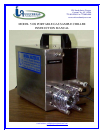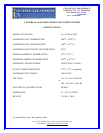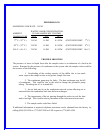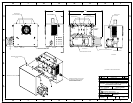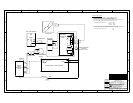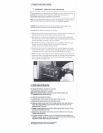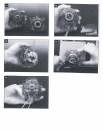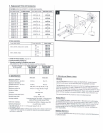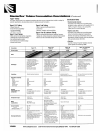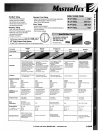
MODEL 510S SAMPLE COOLER
OPERATING INSTRUCTIONS
APPLICATION
The Model 510S was designed as a self contained transportable sample conditioning system to
dehydrate a gas sample prior to being analyzed by a combustion monitor or transportable infra-
red analyzer. It can be left in place, powered continuously to protect an analyzer which is on
stream, continuously analyzing a gas sample.
DESCRIPTION
The Model 510S sample cooler is a thermoelectric chiller containing a DC power supply, a
temperature controller, a 316SS heat exchanger, and a condensate pump all encased within a
stainless steel enclosure. The enclosure has a convenient handle to make it easily transportable.
A power cord is provided to connect the chiller to line power.
The heat exchanger is milled out of a solid block of 316SS with tubing fittings welded onto the
block. The sample path is in the shape of a “V” with the inlet and outlet at the top of the block
and the condensate drain at the bottom of the “V”. Two thermoelectric elements are sandwiched
between the heat exchanger and the heat sink which discharges the heat produced by the
thermoelectric elements
Two thermoelectric elements are wired in series and supplied with 24 VDC to cool the sample
heat exchanger. A controller is provided to interrupt the current through the thermoelectric
elements when the temperature drops below the temperature set point. The temperature is
factory set at 5
o
C. This temperature can be adjusted using a potentiometer on the control circuit
board. The temperature sensor is an AD592 semiconductor device.
The heat which is removed from the gas sample (and that which is created by the Thermoelectric
Elements) is discharged by a heat sink which is cooled with a 24 VDC muffin fan blowing
directly into the heat sink. The heat sink is fabricated from solid block of aluminum which
eliminates the epoxy joints in more conventional heat sink designs which are barriers to heat
conduction. The result is a heat removal system with superior performance under all conditions.
A small peristaltic pump flowing at a continuous rate of 5 ml per minute is used to remove the
condensate from the heat exchanger.



